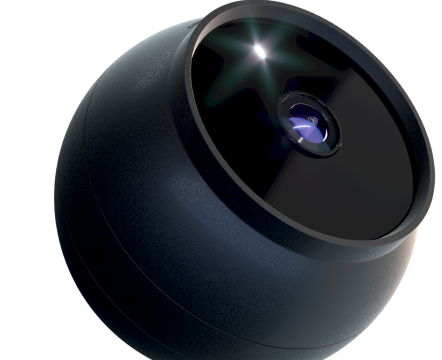GPS or Global Positioning Satellite refers to a system that tracks the location of a device. In the trucking industry, GPS is used to track commercial vehicles on the road.
Apart from pinpointing the location of a vehicle, GPS tracking can also help monitor the speed of the vehicle, its route, the estimated time of delivery, and more.
If you ever wondered, “how can I track my CMV,” “how to plan delivery route,” or “how to monitor CMV speed,” GPS tracking is the answer.
There are various benefits of GPS tracking for fleets of all sizes and types. Here are a few of them in more detail.
1. Improved visibility into your operations
One of the biggest benefits of GPS tracking and telematics is improved visibility into your operations and the location of all your assets. This can not only help ensure better planning and well-informed decisions, but it can also help with minimizing cargo theft.
According to a report, in the first three months of this year, cargo theft increased by 25 percent to 144 reported incidents.
With GPS tracking, you can pinpoint where your assets are at any point in time. You can also identify areas where cargo theft is more common and plan your routes accordingly with GPS.
With geofencing, you can also build virtual parameters and get real-time alerts whenever an asset enters or exits that location. This can be instrumental in preventing cargo theft.
2. Improved fuel efficiency by reducing vehicle idling
Fleets can save a lot of money by optimizing fuel usage and smarter route planning. Since fuel can be one of the biggest expenses for a fleet, it can have a significant positive impact on the bottom line of your company.
Some telematics devices and fleet management software can also help you identify drivers who idle for too long. A study by the U.S. Department of Energy reveals that heavy-duty commercial motor vehicles consume approximately 0.8 gallons of fuel per hour while idling. The increased gas emissions and accelerated wear and tear of the engine are on top of it.
Learn how you can minimize vehicle idling and improve fuel efficiency.
3. Minimizing poor driving habits
Apart from idling, poor driving habits such as hard acceleration and speed can also waste fuel. These driving behaviors can also be a potential safety risk.
GPS tracking combined with a capable fleet management software can help you identify poor driving habits such as speeding, hard braking, excessive acceleration, and hard cornering.
4. Reduced driver detention time
Driver detention at receivers and shippers can cost up to $1,280 per driver per year. GPS tracking can play a crucial role in reducing driver detention time and improving overall efficiency.
For instance, you can monitor the exact location of the vehicle via GPS, get a reasonably accurate ETA, and inform shippers and receivers ahead of time, which may help reduce detention time.
Flying Star Transport increased efficiency up to 15 percent with Motive’s fleet management solutions. “We have gone from roughly 5 hours, last year, per load on a 130-mile haul, and now we’re running about 4 hours per load on a 120-mile haul,” says Jayson Boydstun, CFO of Flying Star Transport.
5. Improved customer service with geofencing
In a competitive trucking industry, having great customer service holds the key to repeat customers and sustainable growth. With geofencing and GPS tracking, it is finally possible for fleets of all types and sizes to provide excellent customer service and timely ETAs.
6. Data-driven business decisions
Telematics devices and fleet management software provide valuable data that can help you make informed, data-driven business decisions.
For instance, you can identify different routes and the average amount of time each route takes a driver. You can also see how long a driver is spending at a facility. These are quantifiable metrics that you can also track over a period of time to see the progress you have made and calculate your ROI.
7. Less downtime and increased productivity
Vehicle maintenance and repair costs per mile increased by 20 percent from 2012 to 2016, making them approximately 10 percent of an average fleet’s operational expenditures, according to the ATRI. Proactively identifying vehicle issues is key to keeping your expenses in check.
Telematics devices with the right features can help you identify vehicle maintenance issues early with real-time alerts and fault code detection. By staying on top of vehicle health, you can minimize operational expenses, reduce repair costs, increase time on the road for drivers, and improve productivity.
Here is how Mike Brittingham of EM Way Inc. maintains the health of his vehicles.
“I use Motive fault codes daily. So each day, I do an audit of the fault codes, and if there is anything that I see that’s a red flag, as far as brakes or any immediate safety-related concern, I send it to the shop right away.
So fault codes give you kind of a snapshot of when that component may be going, and that could be a $14,000 system. If you can replace it for $3,000, then you’re doing okay before it gets down to that full meltdown mode.”
Bottom line
GPS or telematics devices are playing a crucial role in improving the trucking industry. With accurate data and improved visibility into operations, fleets are now able to increase efficiency, improve productivity, minimize downtime, and make more informed and data-driven business decisions.
For more information, check out our guide about telematics and how your business can benefit from it.








